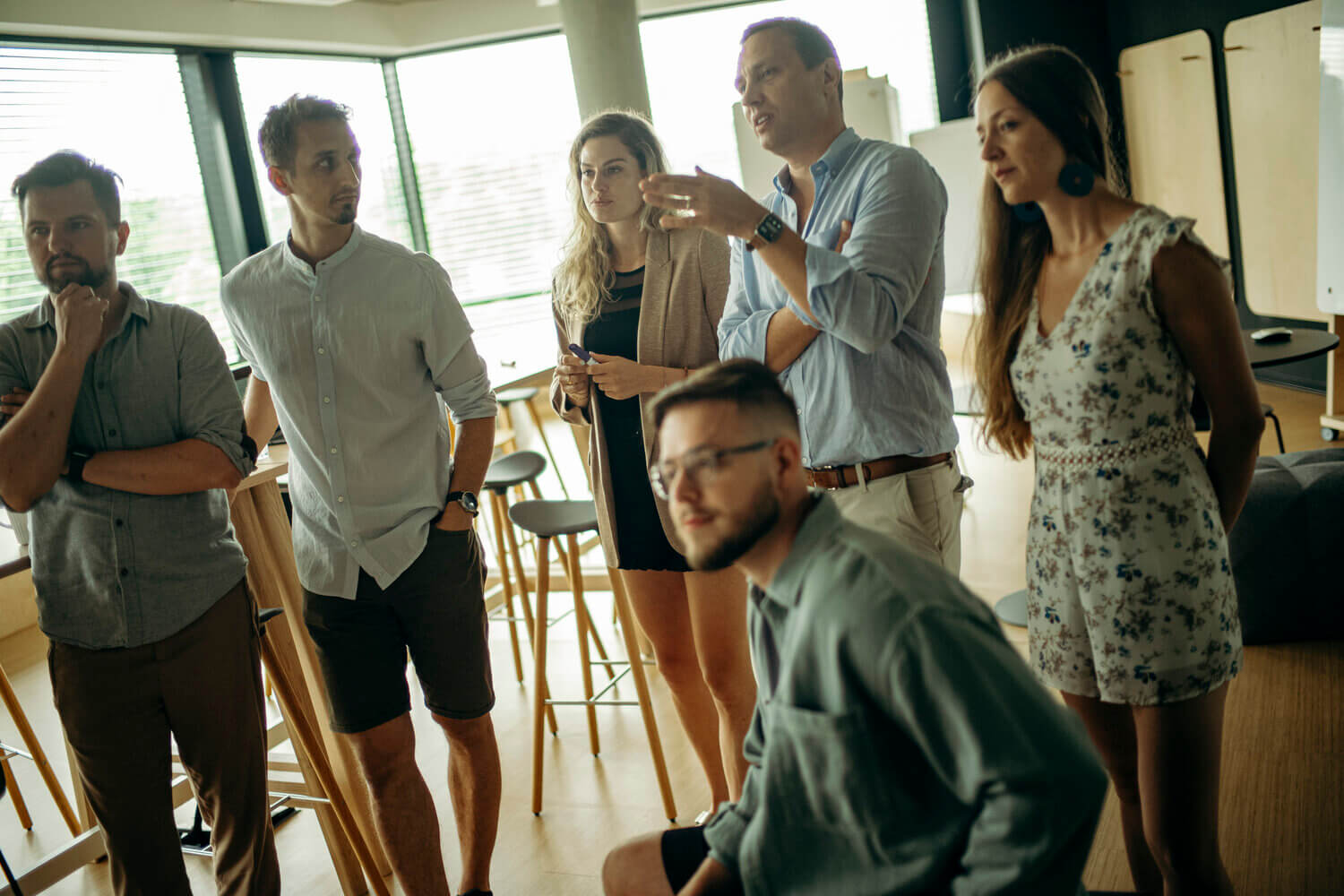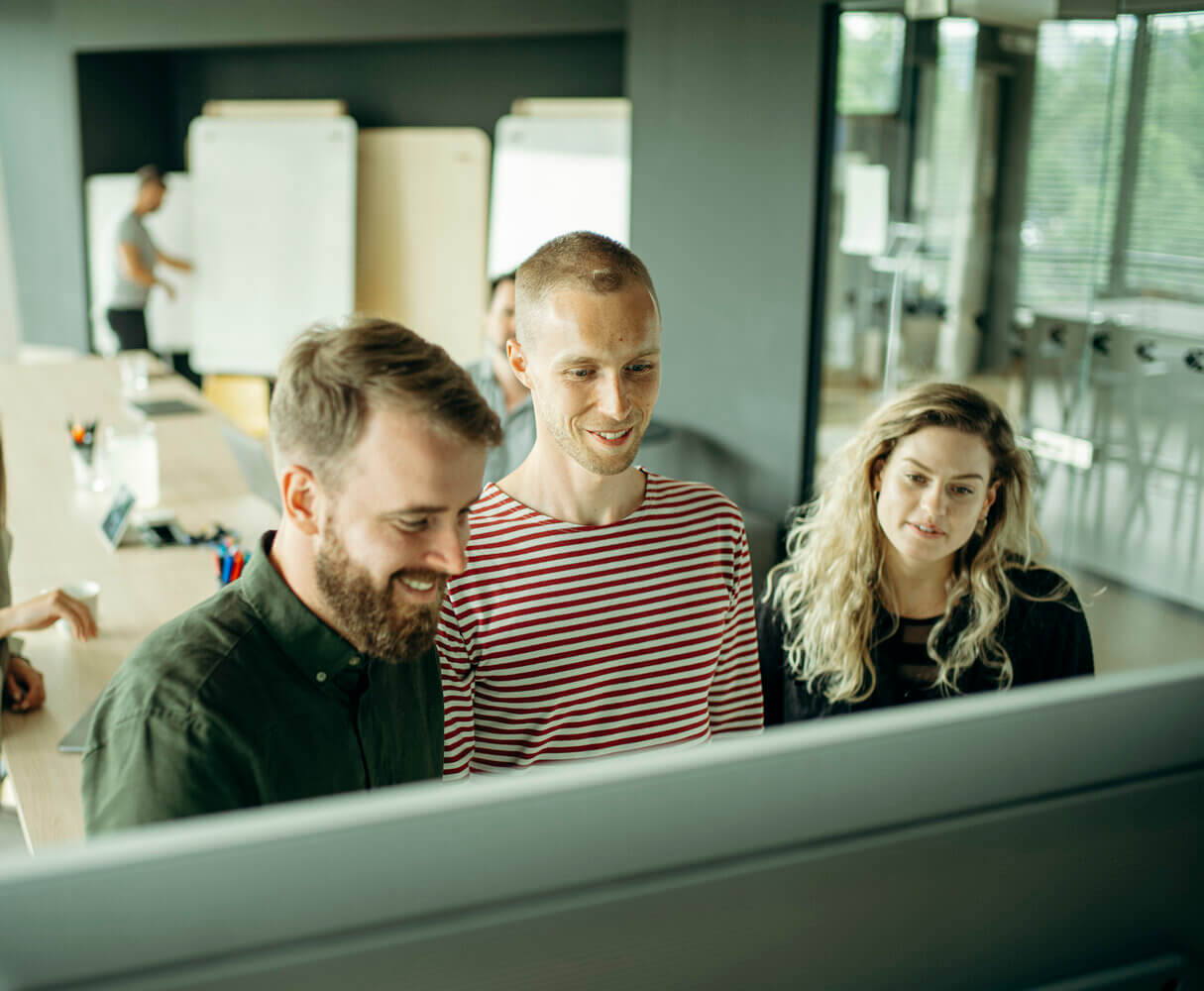Introducing Productboard Pulse. Exec-level insights into what your customers need, powered by AI.
Learn more
In this series of articles, I aim to answer some of the most common design-related questions we get asked during the interview process.
In part one, I provided an introduction to our design ethos and team set-up here at Productboard. For part two, I’ll discuss how we work, focussing on the important matters of collaboration and feedback.
Collaboration happens on different levels. If you take just a product team, there’s a collaboration between the product manager, the designer, and the engineers. These three roles typically work on understanding customer needs, defining problems to be solved, and identifying solutions.
Discovery is a key part of the product development process at Productboard, and designers play an active role during research – interviewing customers, synthesizing data, and presenting findings. Once they put a prototype together, they usually validate it with customers, iterate it, and then ship a solution. This is teamwork, and each function provides its point of view at each step of the process.
Then, if you think about a tribe that has three or four product teams, there’s a collaboration between those three or four designers, who have to be talking together and showing each other work. That usually happens during a dedicated tribe meeting or a design critique.
We have design critiques twice a week, both across teams and also across tribes. And then every other week, we have tribe meetings, where every designer from that tribe presents to everyone from all the teams within that tribe.JN
We’re also encouraged to pair design together, where we hop into Figma, or stand in front of a whiteboard, and we bounce ideas off each other. It doesn’t matter if the other designer is from a completely different team or tribe – we just share the space and work together to solve problems.
The design critique is the main forum for feedback. It’s where we transparently show everything we’re working on. It doesn’t matter how early you are in the process, whether you just have hand-drawn sketches, or whether it’s a full-blown prototype in Figma, we share work and get other people’s perspectives.
Each designer nominates a topic and shows their work to everyone else. Say I’m working on integration, I present the goal, how it should work, how we’re trying to achieve that goal, and so on. I show them everything, and they give feedback.
We always follow certain rules when giving feedback. It’s never personal. We try to tie everything back to our goals. We always take a collaborative approach and try to help each other. Designers are encouraged to state what kind of feedback they’re after, and critiques should be fun.

We certainly understand the importance of focused work. There are times when we have to come together, but then we all go off into our own spaces and produce something. Then we come back again, we share ideas and give feedback, and we all move forward together. It’s all about striking the right balance between focus time and collaboration. Both are essential to the design process.
Everyone works in their own way, and that balance might look different for different people. Ultimately, we’re all in charge of our own schedules, and we are free to decline meetings if we feel our time could be used better elsewhere. Additionally, Wednesdays are company-wide no-meeting days.
In terms of hiring, we’re building geographical hubs. One of the hubs is the Czech Republic, with offices in Prague and Brno. So either you’re in the city or somewhere nearby. Our other hubs are London, San Francisco, and Vancouver.
For remote folks who are already in the company, you need to be able to come to the office from time to time, because remote collaboration only works if you know the people and have spent some time together. A typical occasion is a design sprint, an on-site team-building event, or a quarterly planning meeting.
We try to put fully remote people into one team because collaboration is just better that way. Fully remote teams rely a lot on asynchronous communication. They have a lot more documentation to help everyone stay on top of what’s happening and the decisions they have made. So the work rituals and processes vary based on whether you are remote, hybrid, or onsite.=
That said, with COVID, most of the teams are somewhat hybrid anyway. All meetings that happen in Productboard are remote-friendly – there’s always a Zoom link, and nobody’s forcing you to come to the office. However, there are still colleagues that prefer to come in and work physically alongside others.
Productboard has always been distributed. We’ve always had a presence in Prague and San Francisco, so we’re used to working with that time difference. However, Productboard will never be a fully distributed company.

Yes, it’s not just product designers anymore, we have design systems designers as well. They help us to be consistent when we’re creating and building new features. For example, part of the design system is a UI Kit, which includes all the building blocks that the product is made of – buttons, dropdowns, icons, etc.
The design system team creates the rules and patterns that all of the other product designers follow. This helps us to ensure that Productboard feels like one product that is consistent and familiar.
This system is actually mirrored in the code, where we have the exact same components, the exact same building blocks. So any engineer that’s working in Productboard can take those blocks and build the logic they need.
“ “If you don’t have a design system, everybody’s creating their own pieces. And those pieces might not click together, they might not fit. They’re going to look and feel different. And eventually, the system is going to break down.” ”
We also have brand designers, and they’re responsible for our website, all of the social stuff, ebooks, events, and various campaigns. If there’s a big event like our Summit, they design everything related to that – posters, decks, swag, etc. The brand team now sits under marketing, so it’s not part of the EPD organization.
In the next and final installment, I’ll describe the interview process, explain what the first few weeks look like for successful candidates, and discuss some of the ways Productboard helps designers grow professionally.
I hope this article provided as much clarity as possible and gave you a taste of what life is like as a Productboard designer. If you liked what you heard, why not head over to our careers page and check out the latest openings? If you’re a passionate and talented designer looking for an exciting new challenge, we’d love to hear from you.
